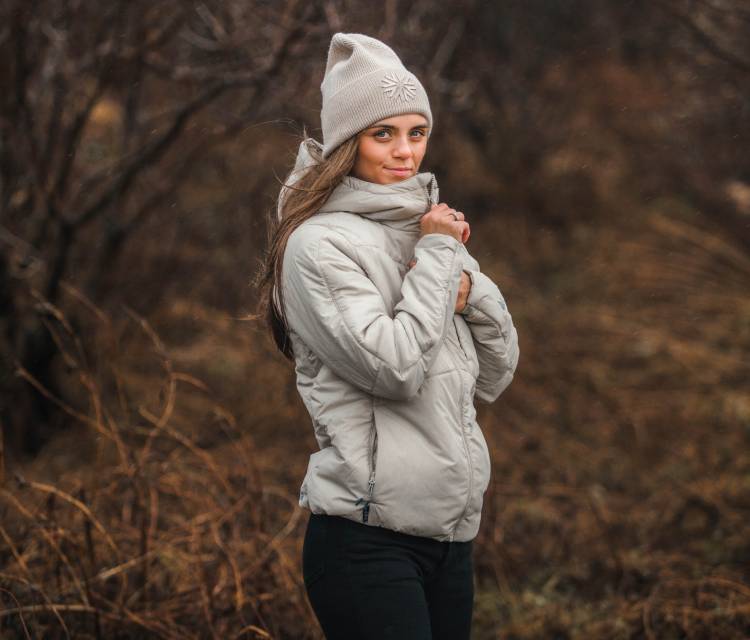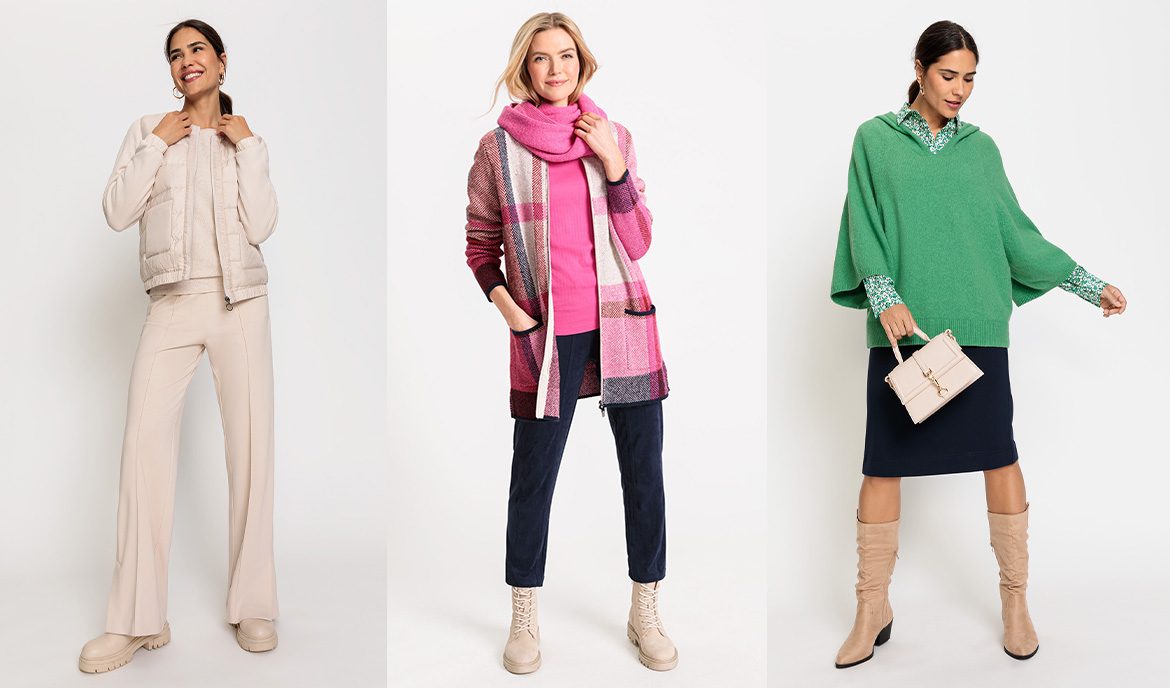The Best Fabrics for Every Season
Understanding the Role of Fabric in Seasonal Comfort
Choosing the right fabric for every season is more than just a fashion statement; it’s about comfort, functionality, and maintaining a connection with the environment. Fabrics serve as a barrier between our bodies and the elements, and understanding their properties can significantly enhance our seasonal wardrobe choices.
Whether you’re navigating the heat of summer, the chill of winter, or the fluctuating temperatures of spring and autumn, selecting the right fabric is crucial to staying comfortable and stylish all year round.
1. Summer Fabrics: Breathability and Lightness
 When it comes to summer, the focus should be on fabrics that promote breathability and keep you cool even in the hottest temperatures. The right fabric can make a world of difference, helping you avoid the discomfort of overheating and excessive sweating.
When it comes to summer, the focus should be on fabrics that promote breathability and keep you cool even in the hottest temperatures. The right fabric can make a world of difference, helping you avoid the discomfort of overheating and excessive sweating.
Cotton is the most popular choice for summer clothing, and for good reason. It’s lightweight, breathable, and absorbs moisture, making it ideal for hot and humid conditions. Cotton allows air to circulate through the fabric, which helps to keep the body cool. Additionally, it’s versatile and comes in various styles, from crisp shirts to flowy dresses, making it a summer staple.
Linen is another excellent option for summer. Known for its exceptional breathability and ability to wick moisture away from the body, linen is perfect for those sweltering days. It has a slightly looser weave than cotton, which allows for better airflow. Linen's natural texture also gives it a laid-back, casual vibe that’s perfect for summer outings. While it does wrinkle easily, this is often considered part of its charm.
Rayon, a man-made fabric, is also worth considering. It’s made from natural fibers but processed chemically, resulting in a fabric that mimics the qualities of cotton and linen. Rayon is lightweight, breathable, and has a smooth texture that feels cool to the touch. It’s often used in summer dresses, blouses, and skirts due to its ability to drape beautifully and keep the wearer cool.
2. Winter Fabrics: Warmth and Insulation
 Winter demands fabrics that provide insulation and retain body heat. As temperatures drop, the key to staying warm is layering with the right materials.
Winter demands fabrics that provide insulation and retain body heat. As temperatures drop, the key to staying warm is layering with the right materials.
Wool is the go-to fabric for winter. Its natural insulating properties make it ideal for cold weather. Wool fibers trap air, creating a barrier that retains body heat. Despite its warmth, wool is also breathable, meaning it can regulate temperature and prevent overheating. Wool comes in various forms, including merino, cashmere, and tweed, each offering different levels of warmth and texture. Merino wool is particularly prized for its softness and lightweight feel, making it suitable for both outerwear and base layers.
Fleece, a synthetic fabric, is another popular choice for winter. It’s lightweight, yet it offers excellent insulation. Fleece is often used in jackets, hoodies, and blankets because it provides warmth without the bulk. It’s also moisture-wicking, making it a great option for outdoor activities in cold weather. Fleece garments are easy to care for and retain their insulating properties even when wet, which is crucial in snowy or rainy conditions.
Flannel is a type of cotton fabric that’s brushed on one or both sides to create a soft, fuzzy texture. This brushing process increases the fabric’s insulation, making flannel a cozy choice for winter shirts, pajamas, and bedding. It’s breathable and retains heat well, making it comfortable to wear indoors and outdoors. Flannel’s association with warmth and comfort makes it a winter favorite, particularly in colder climates.
3. Spring Fabrics: Flexibility and Layering
 Spring is a transitional season, with temperatures that can fluctuate widely throughout the day. The key to dressing for spring is flexibility, which means layering with fabrics that are both lightweight and adaptable.
Spring is a transitional season, with temperatures that can fluctuate widely throughout the day. The key to dressing for spring is flexibility, which means layering with fabrics that are both lightweight and adaptable.
Denim is a versatile fabric that works well in spring. It provides enough warmth for cooler mornings and evenings while remaining breathable during the warmer parts of the day. Denim jackets, skirts, and jeans are staples for spring wardrobes, offering a balance between style and practicality. The durability of denim also makes it suitable for outdoor activities typical of the spring season.
Chambray is often confused with denim but is a lighter alternative, making it perfect for spring. Like denim, chambray is a cotton fabric, but it’s woven differently, resulting in a softer, more breathable material. Chambray shirts and dresses are ideal for layering in spring, offering a casual yet polished look that transitions well between different temperatures.
Silk is another excellent fabric for spring, particularly when layered. Silk’s natural temperature-regulating properties make it suitable for both warm and cool days. It’s lightweight and breathable, with a luxurious feel that adds elegance to any outfit. Silk scarves, blouses, and camisoles are perfect for adding a touch of sophistication to spring ensembles while ensuring comfort.
4. Autumn Fabrics: Comfort and Durability
 Autumn, like spring, is a transitional season, but with a greater emphasis on warmth as temperatures begin to drop. The best fabrics for autumn should offer comfort, durability, and the ability to layer easily.
Autumn, like spring, is a transitional season, but with a greater emphasis on warmth as temperatures begin to drop. The best fabrics for autumn should offer comfort, durability, and the ability to layer easily.
Corduroy is a fall favorite. This fabric is known for its ribbed texture and soft feel, which provides warmth and comfort as the weather cools down. Corduroy is durable and versatile, making it ideal for pants, skirts, and jackets. The fabric’s distinctive appearance adds a seasonal touch to any wardrobe, with a range of colors that complement the earthy tones of autumn.
Tweed is another excellent choice for autumn. Traditionally made from wool, tweed is a durable, moisture-resistant fabric that provides warmth without being too heavy. Its textured surface and rich patterns, such as herringbone and plaid, make tweed garments, like blazers and coats, a stylish addition to any fall wardrobe. Tweed’s natural insulation and wind resistance make it practical for cooler autumn days.
Velvet adds a touch of luxury to autumn fashion. This fabric is soft, plush, and has a distinctive sheen that makes it perfect for evening wear and special occasions. Velvet provides warmth and comfort, making it suitable for dresses, blazers, and even trousers. While it’s often associated with formal wear, velvet can also be dressed down for a chic, everyday look during the cooler months.
Conclusion
Choosing the right fabric for each season not only enhances comfort but also elevates your style. By understanding the properties of different fabrics and how they interact with seasonal conditions, you can build a versatile, functional wardrobe that keeps you looking and feeling your best year-round. Whether you’re embracing the lightness of summer, the warmth of winter, the flexibility of spring, or the comfort of autumn, the right fabric choice is key to navigating the seasons in style.








































